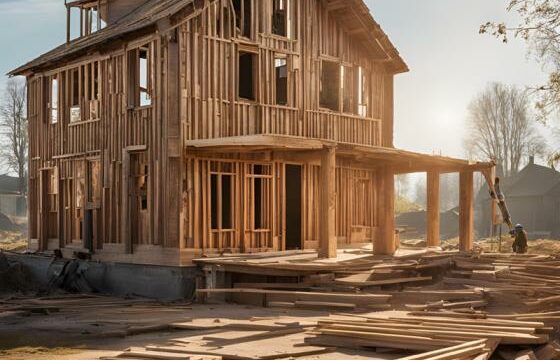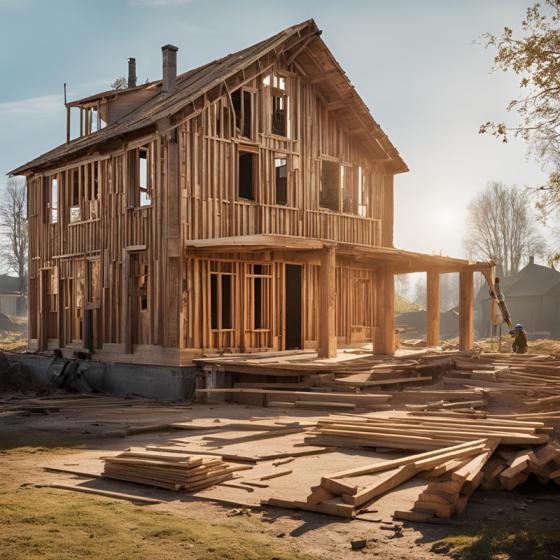Have you ever noticed cracks in your walls or floors that seem slightly uneven? These could be signs that your home’s foundation needs attention. House restumping is a critical process for many Australian homes, especially older ones or those built on uneven terrain. However, it’s often overlooked until the damage becomes severe. If you suspect your home needs restumping, this guide will help you understand the process and avoid common mistakes.
In this article, we’ll explore the key errors people make during house restumping projects, from choosing the wrong materials to skipping council approvals. You’ll also learn how to spot early warning signs, plan your budget, and ensure the job is done correctly.
Overview of House Restumping
House restumping involves replacing or reinforcing the stumps that support your home. These stumps, made of materials like hardwood, steel, or concrete, can deteriorate over time due to soil movement, moisture, or pests. When this happens, your home may develop cracks, uneven floors, or even structural instability. Restumping is essential to maintain your home’s safety and value.
Why Mistakes Happen in Restumping Projects
Mistakes often occur because homeowners underestimate the complexity of house restumping. Factors like soil conditions, material choices, and council approvals can complicate the process. Cutting corners by hiring unqualified contractors or skipping inspections can lead to costly repairs later. Proper planning and professional guidance are key to avoiding these pitfalls.
Understanding the Restumping Process
What is Restumping and Why is it Necessary?
Restumping involves jacking up your home, removing old stumps, and replacing them with new ones. This process is necessary because stumps bear the entire weight of your home. Over time, they can decay, corrode, or shift, leading to structural issues. Warning signs include sagging floors, sticking doors, and visible cracks.
Tips on How to Restump a House Correctly
To ensure a successful house restumping project:
- Consult a structural engineer or qualified contractor.
- Choose the right stump material based on soil type and climate.
- Plan your budget carefully, including potential repairs to flooring or plumbing.
- Document each step with photos and receipts for future reference.
How Long Does It Take to Restump a House?
The timeline for house restumping depends on factors like the size of your home, the number of stumps needed, soil conditions etc. A small to medium-sized property may take one to several weeks. Delays can occur if unexpected issues, like termite damage, arise or if council inspections are required.
Council Approvals and Legal Requirements
In many parts of Australia, house restumping requires council approval, especially if it involves altering your home’s height or footprint. Skipping this step can result in fines or legal complications. Always check with your local council to ensure you have the necessary permits before starting the project.
Early Warning Signs and Preparation
How to Know If Your House Needs Restumping?
Look for signs like uneven floors, sticking doors, or cracks in walls. Termite activity or visible damage to stumps are also red flags. Addressing these issues early can prevent more severe structural problems.
Pre-Project Inspections and Assessments
Before starting house restumping, arrange a professional inspection. This will identify which stumps need replacement and assess soil conditions, drainage, and potential complications. An engineer’s report can help you decide whether full or partial restumping is needed.
Creating a Realistic Budget and Timeline
Overestimate your budget and timeline to account for unexpected issues. Get quotes from multiple contractors and set clear milestones for the project. Open communication with your contractor will help you address any delays or cost overruns quickly.
Common Mistakes to Avoid
Ignoring Soil Conditions and Drainage
Soil type and drainage play a crucial role in house restumping. Clay soil expands and contracts with moisture, while sandy soil can shift easily. Poor drainage can weaken stumps over time. Address these issues by grading the soil and installing proper drainage systems.
Choosing Inappropriate Stump Materials
Selecting the wrong materials can lead to future problems. Hardwood stumps may rot if not treated properly, while steel stumps can corrode in damp environments. Concrete stumps are durable but may crack in shifting soil. Consult a professional to choose the best material for your home.
Overlooking Structural Alignment
Precise alignment is critical during house restumping. Misaligned stumps can cause uneven floors, sticking doors, and other issues. Use professional tools like laser levels to ensure accuracy.
Using Unqualified Contractors or DIY Approaches
House restumping is not a DIY job. It requires specialised equipment and expertise. Hiring unqualified contractors or attempting the work yourself can lead to costly mistakes and safety hazards. Always hire licensed professionals with experience in house restumping.
Key Takeaways
House restumping is a significant investment in your home’s safety and stability. By avoiding common mistakes—like ignoring soil conditions, choosing the wrong materials, or hiring unqualified contractors—you can ensure a successful project.
With proper planning and professional guidance, house restumping can protect your home’s foundation and increase its value. If you notice any warning signs, don’t delay—consult a qualified contractor house restumping to assess your home and create a solid plan.
By following these tips, you’ll avoid costly errors and ensure your house restumping project is completed safely and efficiently.


